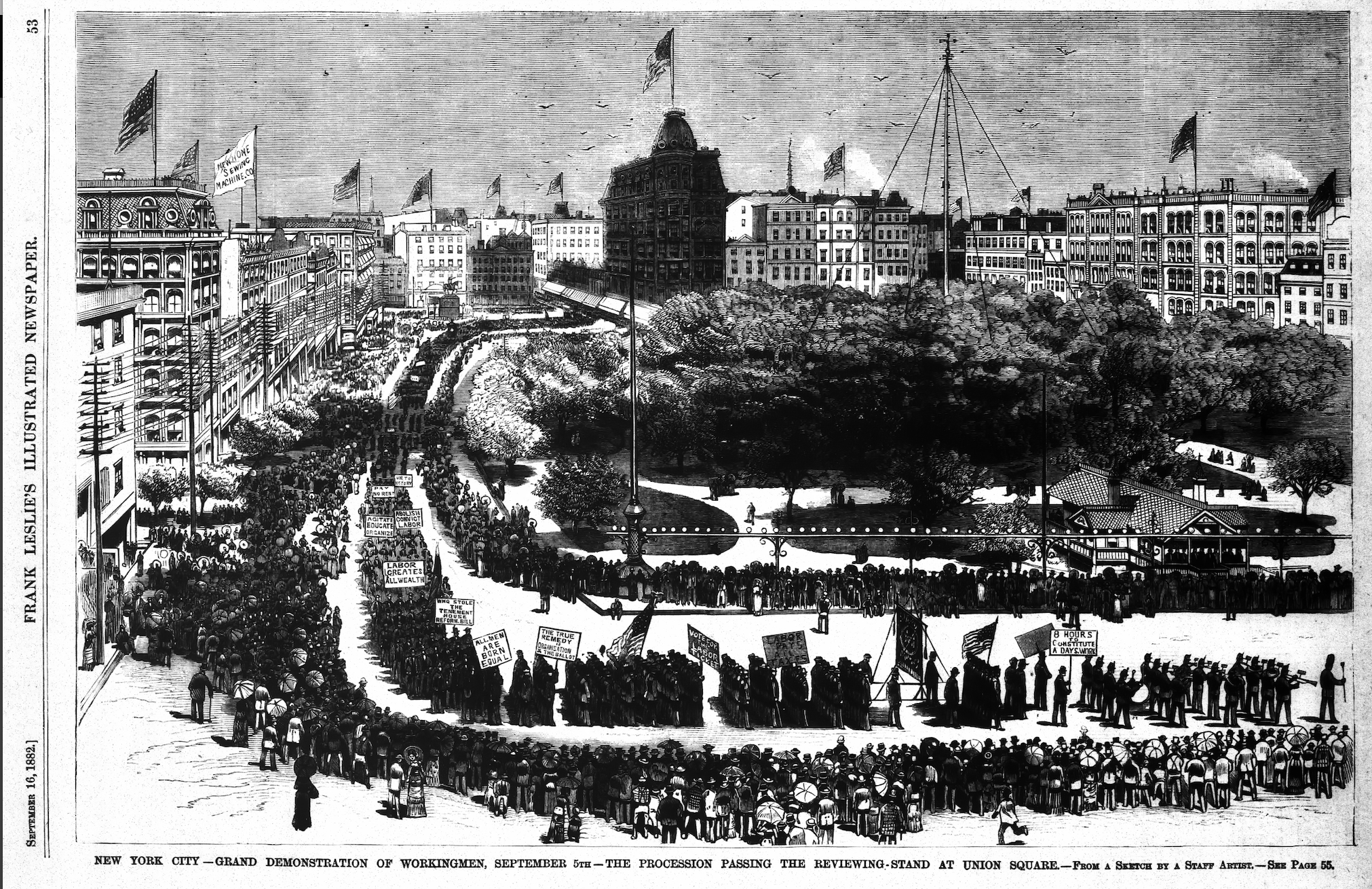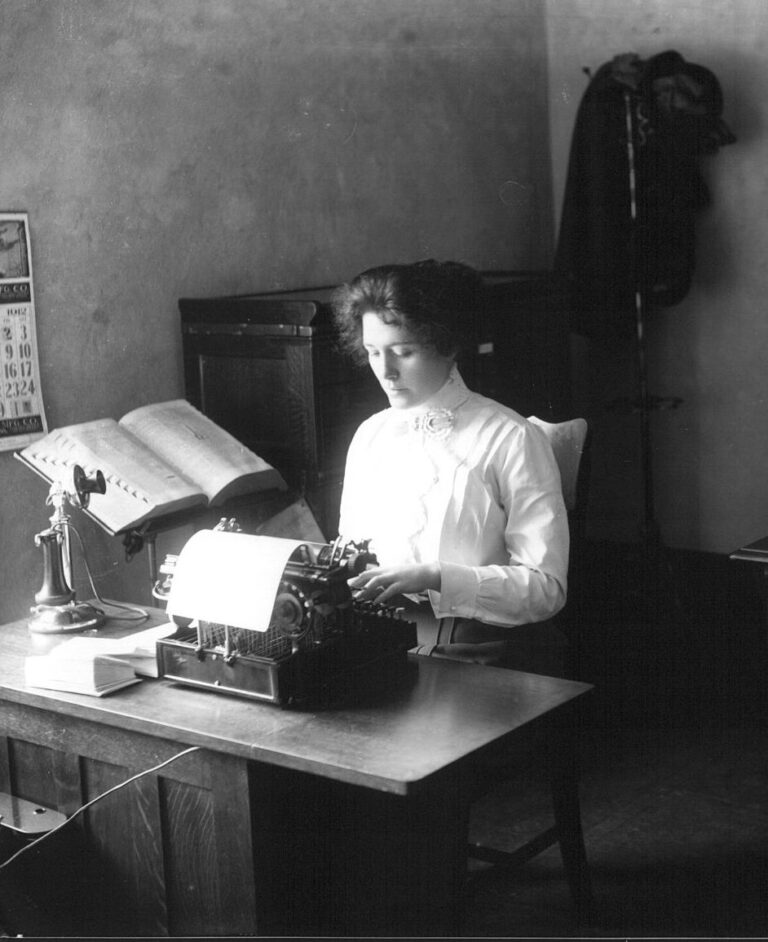
Labor Day, the labor movement, and American workers
For Labor Day, the Jack Miller Center recognizes the impact of American workers and the labor movement.
Labor Day, celebrates American workers and their past and current contributions to the success of our country. The first Labor Day took place on September 5, 1882, in New York City. The Central Labor Union of New York organized a parade of thousands of union members from all trades that culminated in a picnic for the members and their families.
This form of celebration gained popularity across the country – by 1894, over 30 states had recognized Labor Day as a holiday. On June 28, 1894, President Grover Cleveland signed a law officially making the first Monday of September a national holiday.
In its earliest form, Labor Day consisted of street parades and picnics exhibiting the strength and number of local labor unions. Prominent citizens made speeches at these festivities, and the Sunday before Labor Day was often dedicated to the educational and spiritual element of the organized labor movement.
Although Labor Day no longer has the fanfare that it did in past years, it still celebrates the American workforce and offers many citizens a day of rest. Labor and the nature of work continue to be hot topics on the national stage.
Resources on Labor Day
Commentary and articles from JMC Scholars
Several JMC scholars have written about American workers and how they have contributed to our nation’s identity. In recognition of Labor Day, the Jack Miller Center presents the following collection of resources about the origins of organized labor, the nature of the American work ethic, and the government’s role in the average worker’s life.
The Progressive Era: The Birth of Labor Day in Context
Gwendoline Alphonso, “Hearth and Soul: Economics and Culture in Partisan Conceptions of the Family in the Progressive Era, 1900-1920.” (Studies in American Political Development 24.2, October 2010)
Luigi Bradizza, “The Progressive Critique of Free Markets: A Response.” (Heritage Foundation First Principles 69, August 2018)
Luigi Bradizza, “Richard T. Ely: Progressive Political Economist and Social Gospel Advocate.” (The Heritage Foundation, Makers of American Political Thought Series16, August 2016)
Kevin Burns, William Howard Taft’s Constitutional Progressivism. (University Press of Kansas, 2021)

Paul Carrese, “Montesquieu, the Founders, and Woodrow Wilson: The Evolution of Rights and the Eclipse of Constitutionalism.” (The Progressive Revolution in Politics and Political Science, Rowman & Littlefield, 2005)
Samuel DeCanio, Democracy and the Origins of the American Regulatory State. (Yale University Press, 2015)
Stephen Engel (editor), The Progressives’ Century: Political Reform, Constitutional Government, and the Modern American State. (Yale University Press, 2016)
Nora Hanagan, “From Agrarian Dreams to Democratic Realities: A Deweyan Alternative to Jeffersonian Food Politics.” (Political Research Quarterly 68.1, 2015)
Marc Landy, “Decentralization and New Labour.” (New Labour: The Progressive Future? Palgrave Macmillan, 2001)
Wilfred McClay, “Croly’s Progressive America.” (The Public Interest 137, Fall 1999)
Peter McNamara, “Hamilton, Croly and American Public Philosophy.” (The Many Faces of Alexander Hamilton, New York University Press, 2006)
Ariel Ron, “Scientific Agriculture and the Agricultural State: Farmers, Capitalism, and Government in the Late Nineteenth Century.” (Journal of the Gilded Age and Progressive Era 14, July 2016)
Rogers Smith, “The Progressive Seedbed: Claims of American Political Community in the 20th and 21st Centuries.” (The Progressives’ Century: Political Reform, Constitutional Government, and the Modern State, Yale University Press, 2016)
The Meaning of Work and the Pursuit of Happiness
Carli Conklin, The Pursuit of Happiness in the Founding Era: An Intellectual History. (University of Missouri Press, 2019)

Michael Gillespie, “The Tragedy of the Goods and the Pursuit of Happiness.” (In Search of Goodness, University of Chicago Press, 2011)
Christopher Kelly, “Rousseau on the Pursuit of Happiness.”(Rousseau and Dignity: Art Serving Humanity, Notre Dame University Press, 2017)
James Russell Muirhead, “Work.” (The Encyclopedia of Political Thought, Wiley-Blackwell, 2014)
James Russell Muirhead, “The Work Ethic.” (Endangered Virtues, Hoover Institution, 2011)
Scott Yenor, “Humanity and Happiness: Philosophic Treatment of Happiness in a Non-Teleological World.” (Interpretation: A Journal of Political Philosophy 31.3, Summer 2004)
Labor and Higher Education
Commentary and articles from JMC Scholars
Commentary and articles from JMC Scholars
Politics, Government, and the Labor Movement
Thomas Rives Bell, “Perverse Politics: ‘Recess Appointments, Noel Canning, and the Limits of Law.’” (Presidential Studies Quarterly 48.2, June 2018)
Daniel DiSalvo, “The Problem of Government Labor Relations: From Party Machines to Public Sector Unions.” (Jack Miller Center Webinar, June 25, 2020)
James Russell Muirhead, Just Work. (Harvard University Press, 2004)
James Russell Muirhead, “Meaningful Work and Politics.” (The Hedgehog Review, Fall 2012)
Michael Munger (coauthor), “The Impact of Legislative Attributes on Interest Group Contributions.” (Journal of Labor Research 7.4, 1986)
Michael Munger (coauthor), “The Impact of Legislator Attributes on Union PAC Campaign Contributions.”(Journal of Labor Research 13.1, 1992)
Charles Murray, “Welfare and the Family: The U.S. Experience.” (Journal of Labor Economics 11.1, 1993)
David Skarbek, “Anarchy, Groups, and Conflict: An Experiment on the Emergence of Protective Associations.”(Social Choice & Welfare 38.2, 2012)
Bartholomew H. Sparrow, “The National War Labor Board and American State Building: A Response.” (Journal of Policy History 14.2, 2002)
Emily Zackin, “To Change the Fundamental Law of the State’: Protective Labor Provisions in U.S. Constitutions.” (Studies in American Political Development 24.1, 2010)
Division of Labor and the Wage Gap
Nancy Hirschmann, “Equality, Freedom and the Sexual Division of Labour.” (Visions for Gender Equality, ENEGE: Network of Experts in the Field of Gender Equality for the European Commission, DG Justice Unit D2, 2015)

Nancy Hirschmann, “The Sexual Division of Labor and the Split Paycheck.” (Hypatia: Journal of Feminist Philosophy 31.3, Summer 2016)
Michael Munger, “Division of Labor.” (Concise Encyclopedia of Economics, The Library of Economics and Liberty, 2016)
Michael Munger, “I’ll Stick with These: Some Sharp Observations on the Division of Labor.”(Econlib, Liberty Fund, 2007)
Curt Nichols, “Latino Veterans and Income: Are there Gains from Military Service.” (Latinos and the Economy: Integration and Impact in Schools, Labor Markets and Beyond, Springer 2010)
David Skarbek (coauthor), “Sweatshops Wages and Third World Living Standards: Are the Jobs Worth the Sweat?” (Journal of Labor Research 27.2, 2006)
